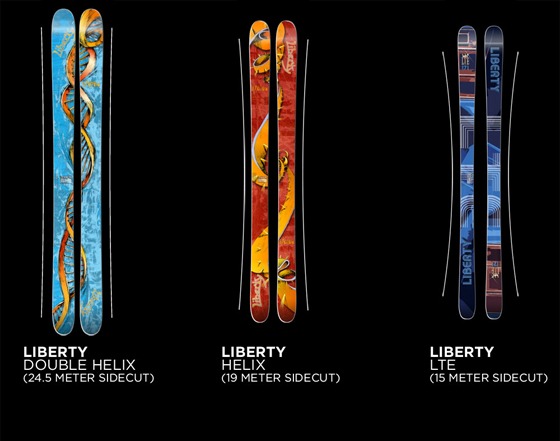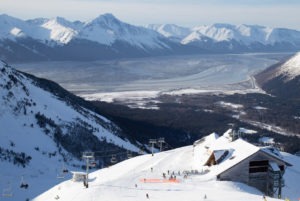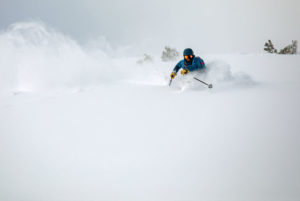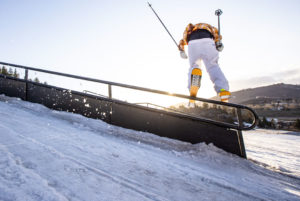Skis didn’t have sidecut until 1993. “Straight” skis were the standard since the sport’s inception, but when the fledgling snowboard industry started utilizing sidecut the ski industry followed suit. The development of sidecut made skis easier to turn, thus making the sport accessible to a wider range of people.
Simply put, sidecut is the arcing, hourglass-like curve that runs along a ski’s edges from tip to tail. It’s this curve that dictates how your skis turn. And with that, the deeper the curve, the faster and more abruptly your skis will turn. For example, skis with deep, drastic sidecuts make snappier, sharper turns but have a smaller turn radius that enables them to make very quick turns without skidding out or smearing. But too much sidecut makes a ski less stable at speed and largely incapable of long, arcing turns without washing out.
To contrast, skis with less/shallower sidecut are best at making long, arcing turns and have a much larger turning radius. They are also more stable at high speeds and in variable snow conditions. Most skis, typically grouped as “all mountain”, are somewhere in the middle, and offer the ability to turn quickly and arc medium-to-long radius turns. All mountain equals versatility, from high-speed groomers to big mountain pillow drops. With all mountain in the middle and most versatile, you then have freestyle on one end, and freeride/powder skis on the other.
On-the-snow examples from all three categories:
• Freestyle skis like Liberty’s LTE (15-meter radius) have a deeper sidecut and smaller turning radius than…
• All-mountain skis like Liberty’s Helix (19-meter radius).
• Meanwhile, Liberty’s freeride/powder-driven Double Helix has a radius of 24.5 meters









